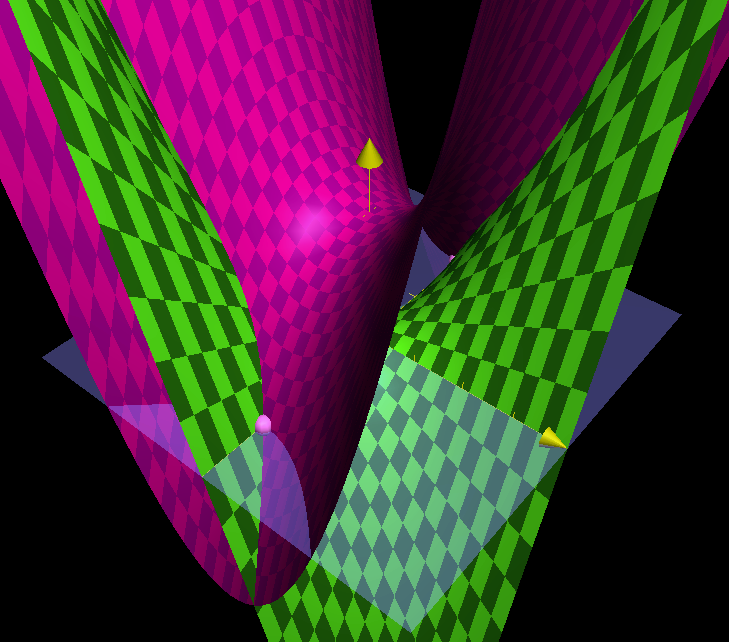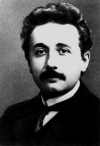Complex Roots
Most algebra students understand that the expression z2 + 1 has no roots (values of z that make the expression's value zero) that are real numbers. However, once we allow complex numbers, both i and –i are roots of that expression.
Graphically, we can see that the expression has no real roots by looking at a graph of x2 + 1 (traditionally, we use x for a real variable and z for a complex variable) and noticing that the curve never crosses the x axis:
There are no input values that make the expression's value zero.
If we try to include the complex numbers to make an equivalent graph, we run into trouble! Each complex number a + bi is best represented on the graph by two numbers, a and b. And each z2 + 1 value also is complex, with two more numbers to represent that. That would require a total of four dimensions! Even imagining a four-dimensional graph is daunting.

Instead, here we see two three-dimensional graphs. The translucent blue plane represents the complex z values; one dimension of that plane represents the real part and the other dimension represents the complex part. Then, the purple curved surface represents the real part of z2 + 1 and the green surface represents the imaginary part. Just like the roots of the real function are the intersections of the curve with the x axis, the roots of the complex function are the intersections of both surfaces with the z plane.
Those intersections are shown as small purple spheres on the imaginary axis of the z plane. They are i and –i, which are complex conjugates as the conjugate roots theorem insists.
I think that graph is beautiful.
So how did I compute the formulae for the purple and green surfaces? I just let z = a + bi and figured it out. z2 + 1 = (a + bi)2 + 1 = a2 + 2abi + (bi)2 + 1 = a2 + 2abi + b2i2 + 1 = a2 + 2abi − b2 + 1 = (a2 − b2 + 1) + 2abi. So to graph the real part (the purple surface) I graphed a2 − b2 + 1 and to graph the imaginary part (green surface) I graphed 2ab.
passionatelycurious.com • Math tutor • Computer Science tutor • What's with the '90s Web site? • contact
